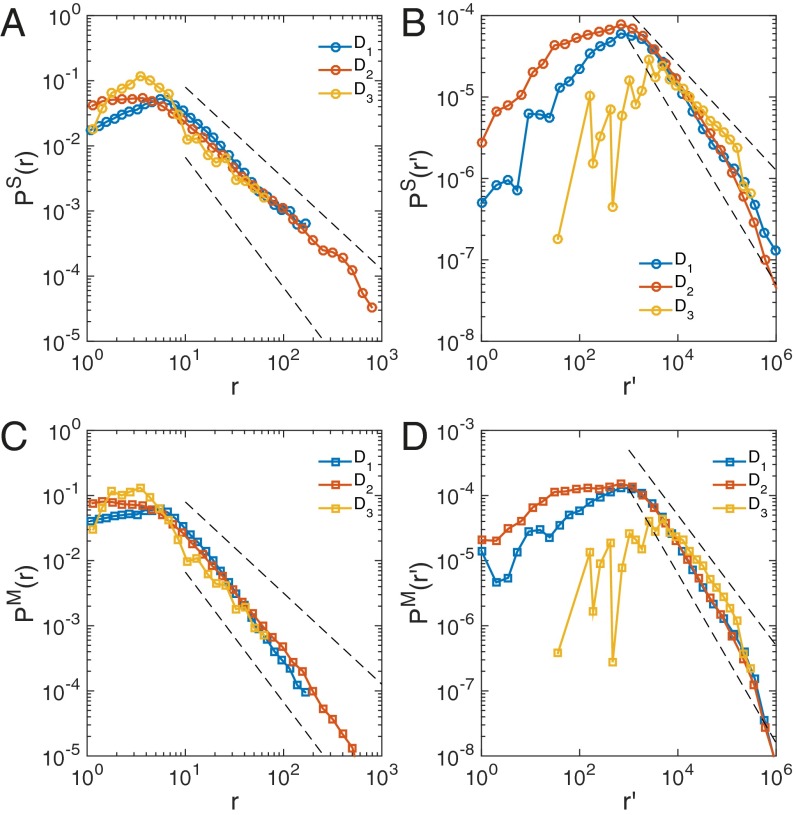Fig. 1.
Communication and jump size distance distributions. (A) Communication distance distributions measured in geodesic distance r, , for all three datasets. Here, r measures the distance between two users when they communicate with each other via either phone calls or SMS. r is measured in the unit of kilometers. (B) Rank distributions for the three datasets follow a power law tail with exponents for , for , and for . (C) Jump size distribution measured in geodesic distance r follows a power law distribution. (D) Rank jump size distribution for rank follows a power law distribution with exponent between 1.2 and 1.3 for and and for . Here we mainly focus on large r (or ) regime, fitting the tail part of the distributions. For fat-tailed distributions such as power law distributions, the tail part is the most important, determining the convergence/divergence of moments of distributions. The small r (or ) regime before the peak is often referred to as small value saturations. Dashed lines serve as guide to the eye.

